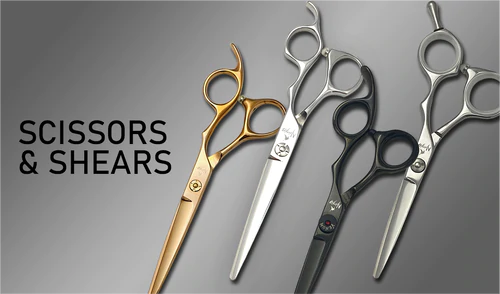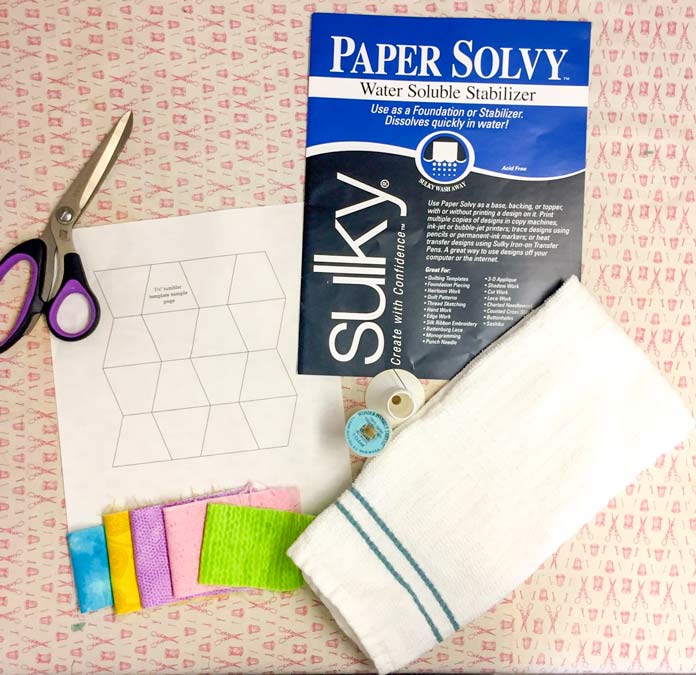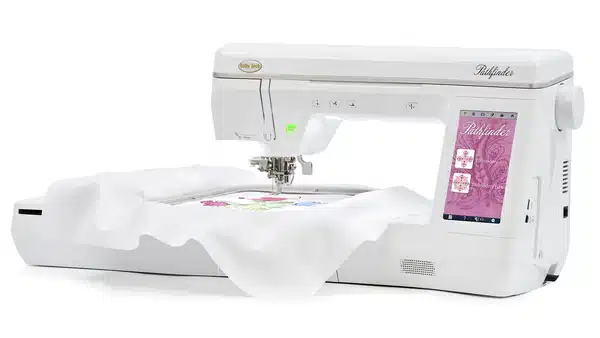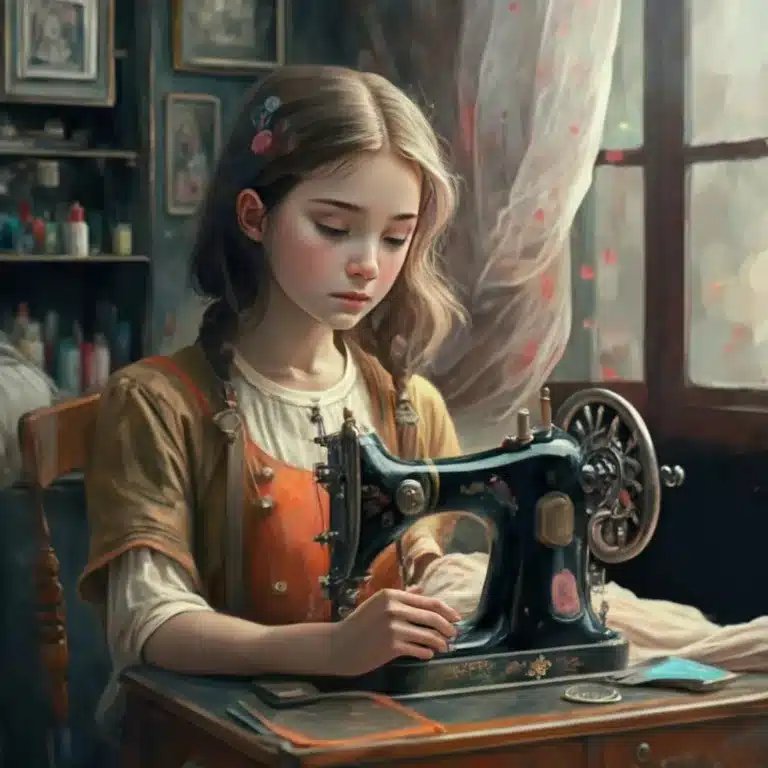Scissors and Shears: Your Sewing Arsenal
Scissors and shears are indispensable tools for any sewing enthusiast, from novices to experienced professionals. They are the workhorses of the sewing room, handling various tasks from cutting fabric to snipping threads. However, choosing the right scissors for the job and using them properly are crucial to ensuring precise cuts, longevity, and safety.
Types of Sewing Scissors
The world of scissors and shears can be overwhelming, with a wide range of options available. However, for sewing purposes, a few essential types stand out:
-
Rotary Cutter: This specialized tool is primarily used for cutting fabric. It features a circular blade that rotates and glides along a cutting mat, allowing for straight, accurate cuts.
-
Fabric Scissors: These versatile scissors are designed for cutting fabric and other soft materials. They have sharp blades that glide through fabric without fraying or damaging it.
-
Thread Scissors: These small, sharp scissors are specifically designed for snipping threads. They have pointed tips that can reach into tight spaces and precision blades that prevent damaging the fabric.
-
Pinking Shears: These scissors create a zig-zag cut, preventing fabric from fraying or unraveling. They are particularly useful for cutting hems, necklines, and other vulnerable areas.
Choosing the Right Scissors
When selecting scissors, consider the following factors:
-
Blade Material: High-quality scissors typically have stainless steel blades for durability and sharpness.
-
Handle Material: Comfort and grip are essential for prolonged use. Consider handles made from non-slip materials like rubber or wood.
-
Weight: Lighter scissors are easier to maneuver, while heavier scissors provide more control for precision work.
-
Blade Length: Longer blades provide more cutting power, while shorter blades are more maneuverable for detail work.
Using Scissors Properly
To ensure the longevity and safety of your scissors, follow these guidelines:
-
Sharpen Regularly: Dull scissors can damage fabric and strain the blades. Invest in a sharpener or take them to a professional for regular maintenance.
-
Cut Only Fabric: Resist the temptation to use your fabric scissors for other tasks like cutting paper or cardboard. This can dull the blades and damage the material.
-
Avoid Overzealous Cutting: Apply gentle pressure while cutting to prevent the blades from skipping or jumping.
-
Store Properly: Store your scissors in a sheath or designated compartment to prevent damage and keep them sharp.
-
Never Cut Against the Grain: Cutting against the grain can damage the fabric and dull the blades. Always cut along the lengthwise grain for the best results.
-
Clean Regularly: Wipe the blades with a damp cloth to remove dust and debris.
By investing in quality scissors, using them properly, and maintaining them regularly, you can ensure their longevity, precision, and safety for your sewing endeavors.

The information in this Guideline is designed to help you choose and use the most
appropriate cutting tool for the project at hand. Consider quality and end use when
shopping for scissors, shears and rotary cutters. (For information on rotary cutters.
Many fabric stores have display models you may try before buying from stock, while some cutting tools are packaged so you can actually sample them. To test scissors or shears, hold them as you would to cut, and consider how their weight and balance feel in your hand. Check for smoothness inside the handle rings. Then cut a variety of fabrics as the quality tests below suggest.
To help ensure future satisfaction, also look for:
• Tempered- or stainless-steel blades. The former has a reputation for quality and
strength, the latter for value and being lightweight and rustproof.
• Uniform width and angle the cutting edges.
• Smooth cutting from the back of the blades to the points.
• Adjustable screw securing the blades. If the blades on scissors work out of alignment; shears with an adjustable screw can be readjusted using the screw to correct the blade alignment. Scissors with a nonadjustable rivet (sometimes molded to look like an adjustable screw) cannot be fixed.
• A reasonable warranty Care Guidelines To use shears to maximum advantage, take
long strokes the length of the blades.
Never use fabric-cutting scissors on paper or other nonfabric materials.
Tie a piece or ribbon around your fabric scissors, and tell your family that the ribbon
means fabric only. Or, purchase scissors and shears with different-color handles.
Wipe scissors clean with a dry cloth after each use. This is especially important after cutting polyesters and other synthetics; lint from these manmade fibers is abrasive and can dull the blades.
Keep the cutting blades sharp. Some stainless steel scissors and shears come with a molded plastic sheath that has a built-in blade sharpener. Forged steel scissors and shears can be sharpened using a sharpening stone. Both may be sharpened using a professional-style
electric sharpener. Or they may be sent to a professional sharpening service or back to
the manufacturer.
Occasionally oil the pivot screw with a tiny drop of sewing machine oil. Open and close
the blades a few times, then wipe the blades with a soft cloth.
Don’t force a cut—this can deform the blades or spread them permanently.
Cutting Tool Definitions & Uses
Many cutting tools are available for“lefties”(lefthanders); ask your dealer about special ordering lefthanded scissors if they aren’t in stock; some shears are available with spring-action handles—often preferred by those plagued by arthritis and repetitive strain injuries.
Be sure your cutting table is an appropriate height for you and your cutting task.
Bent-handled shears feature an angled lower blade.
This keeps the blade flush with the table surface while cutting, affording greater accuracy. Popular lengths are 7″ to 10″. These also are available with micro-serrated blades for more precise cutting of thin, slick fabrics and in lightweight models for making large cutting jobs
more comfortable on all but the heaviest fabrics.
Quality test: Cut to the tip through four layers of midweight fabric.
General-purpose shears will save your sewing shears and scissors from misuse. Use to cut paper, trim leather, snip twine and for other general household textiles.Quality test: Cut through two layers of cardboard.
Sewing scissors, also called trimmers or tailor’s
scissors, come in a wide range of lengths, with 5″ to 7″ most often recommended. These tools feature finely
tapered blades with one pointed and one rounded tip;
the blunt tip prevents fabric snagging when trimming
and grading seams. Quality test: Cut through two layers
of mid-weight fabric. Clip notches with the tip.
Embroidery scissors, with thin, 3 1/2″- to 5″-long blades, are ideal for clipping and notching, trimming fabric from delicate appliqués and embroidery, and snipping thread tails. Many are reproductions of antiques with figurative handles, decorative scrollwork
and various metallic finishes, making them as beautiful as they are useful. Quality Test: Cut a five-pointed star from sheer fabric.
Appliqué scissors are especially designed for close trimming while protecting fabric from damage. The “duckbill” blade allows the scissors to glide between layers of fabric. The curved handles make it easy to trim appliqués and thread when fabric is stretched in an embroidery hoop. Quality Test: Trim fabric close to edgestitching.
Machine embroidery scissors feature unique handles curved to one side to allow comfortable, accurate trimming of loose threads on machine embroidery.
Quality test: Clip threads from work in a machine embroidery hoop.
Thread nippers and clippers are spring-action clippers—with or without a finger loop—featuring very short blades for cutting thread tails and clipping seams quickly. Quality test: Clip a small length of thread or yarn. Spring-back action should be brisk.
Pinking shears have sawtooth blades. They are used to add a ravel-resistant seam finish to loosely woven fabric, automatically notching and reducing bulk in seams and creating a decorative finish on fabrics that don’t ravel. Lengths range from 7″ to 10 1/2″. Also available are lightweight models, as well as scalloping shears for a more rounded effect. Quality test: Cut from the second tooth to the tip, close to the edge of both lightweight and heavyweight fabrics. Check for an uneven “pinked” pattern. A deeper cut will stop the raveling better.
Buttonhole scissors have a special adjustable screw for securing them partially open. This open position translates to a precise cutting length (usually between 1/2″ and 1 1/4″) that prevents cutting through the stitches at the buttonhole end. Quality test: Adjust the screw to correlate to a buttonhole length and mark that length on a double layer of test fabric. Test on both light- and heavy-weight fabric for ease and precision.
Related Posts
Discover relevant articles, tutorials, and tips to improve your skills and explore new techniques.
Stay inspired and connected to our embroidery community.







Hmm it appears like your website ate my first comment (it was super long) so I guess I’ll just sum it up what I wrote and say, I’m thoroughly enjoying your blog.
I too am an aspiring blog blogger but I’m still new to everything.
Do you have any points for first-time blog writers?
I’d genuinely appreciate it.
This article is really a good one it helps new net
users, who are wishing in favor of blogging.
Hey There. I found your blog using msn. This is a really well written article.
I’ll make sure to bookmark it and return to read more of
your useful information. Thanks for the post. I will definitely comeback.
Heya i am for the first time here. I found this board
and I find It really useful & it helped me out much. I hope to give something back and
help others like you helped me.